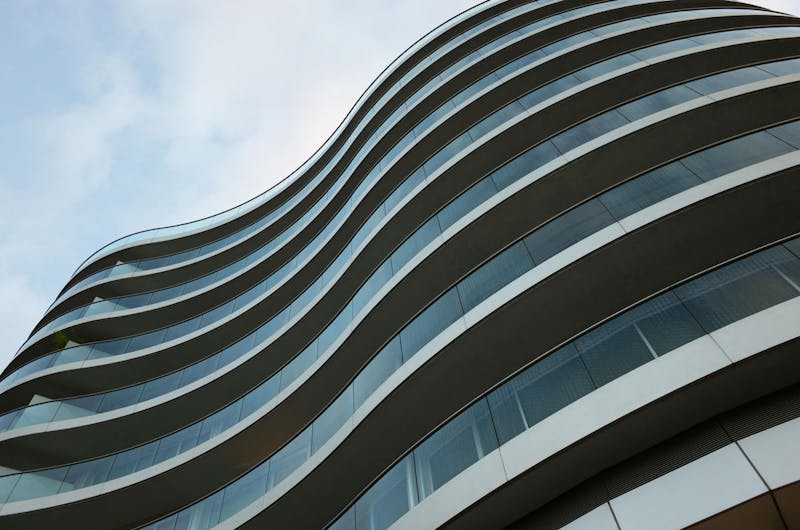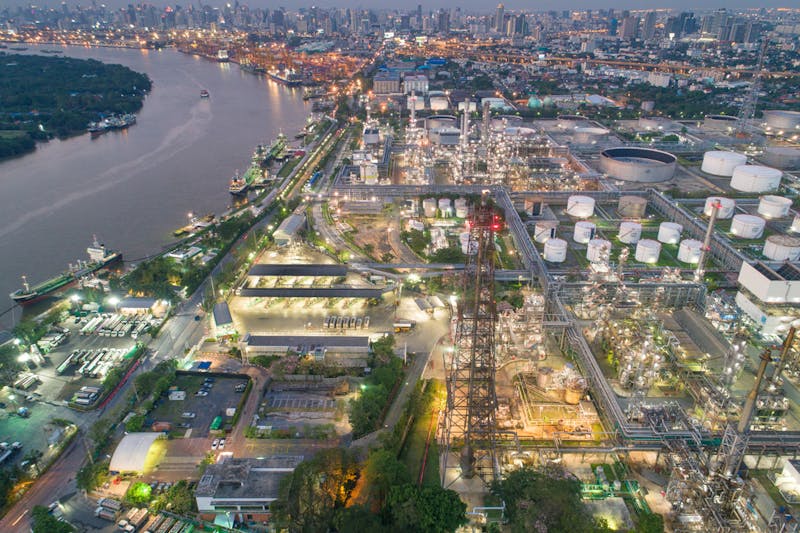Blog Article
Can the built environment be designed to reduce crime?
Most cultures function within a set of rules that are developed to manage and effect the behaviour of society. Where behaviour is deemed unacceptable or anti-social, these rules are often communicated as ‘laws’ and the concept of ‘crime’ is introduced. Historically, the desire to prevent crime tended to focus upon the pressure that could be exerted by local communities on those who might behave in a way that would be detrimental to either a member of or the community as a whole. Punishment has also been used as a method of dissuading would be offenders that their planned criminal activity isn’t worth the consequences, should they get caught.
Criminologists, Sociologists, Psychologists and many others will continue to develop our understanding of crime and its effect on society but this article is going to consider whether it’s possible to actually reduce crime simply through improved planning and design of our built environment.
Firstly, lets explain what we mean by the term ‘built environment’.
It refers to our manmade surroundings; including buildings, transport systems, parks and open spaces, where society resides and goes about its daily life. It’s the new office block, as well as the out-of-town shopping centre, airport, high street or green space.
The built environment is important, as numerous studies over many years have determined that it can influence how it’s human occupants behave and this is important because that infers a potentially negative impact as well as the possible beneficial effect.
CPTED
In the 1950’s and 60’s there was a growing appreciation that good architectural design and town planning could create better places to live and work. In 1971 Criminologist C. Ray Jeffery, published his book “Crime Prevention Through Environmental Design”. In 1972, Architect Oscar Newman published his book, “Defensible Space: - Crime Prevention through Urban Design”. Newman subsequently refined his defensible space approach with further multi-disciplinary aspects and named the concept “Crime Prevention Through Environmental Design”, the term which he credited Jeffery for initiating. Crime Prevention Through Environment Design (CPTED) continued to evolve through the 1980’s with Criminologist Tim Crowe, amongst others, developing on Newman’s original concepts. By 2004, CPTED was commonly understood to refer to the Newman/Crowe model.
Although CPTED emerged from the United States, it has influenced many other Crime Prevention models throughout the world. In the UK, the Police Service introduced Secured by Design (SBD) in 1989, which was the title for a group of projects that focused on the design and security of domestic dwellings, commercial premises and car parks. It supports the principle of ‘designing out crime’ but focuses on physical security and processes to deliver crime reduction.
So, what is CPTED?
CPTED is a pro-active, crime prevention methodology that seeks to influence the decisions of a potential offender prior to perpetrating a criminal act with the intention of reducing levels of crime to the benefit of the local community and society as a whole. It focuses on tactical design and the effective use of the built environment to reduce both crime and the fear of crime. CPTED draws on a common-sense approach and helps develop a heightened sense of awareness of how the built environment might be used to enhance the community, as well as how it might be used for nefarious purposes. Having assessed a broad range of factors, better architectural and planning decisions can be made that positively influence how a space is used.
Modern CPTED incorporates five key elements:
- NATURAL ACCESS CONTROL
- NATURAL SURVEILLANCE
- TERRITORIAL REINFORCEMENT MAINTENANCE AND IMAGE IMPROVEMENT ACTIVITY SUPPORT
Natural Access Control
Natural Access Control limits the opportunity for crime by taking steps to clearly differentiate between public and private space. With the strategic locating of points of entry and egress, the use of security fencing, lighting design and landscaping, it is possible to control the flow of pedestrian and vehicular movement, naturally controlling access.
It is essential to understand the potential users of a space, as this will enable the designer to identify potential conflicts. An area where the elderly or infirm are expected to navigate past a busy office entrance that has a large open area outside that might be attractive to skateboarders is bound to experience some level of user conflict. By introducing suitable landscaping that breaks up the open space, by installing vegetation or installing structures and artefacts, users can be directed, creating segregated paths with appropriate signage and lighting to make the area less attractive to the skateboarders, whilst offering other users a clearer, more defined route to gain entry and exit.
By subtly channelling pedestrians, it is possible to make behaviour more predictable and this predictability can inform design decisions from the outset, often reducing the need for additional physical security measures to be applied. The result is a more natural aesthetic as well as a lower cost of delivery.
Natural Surveillance
Natural Surveillance raises the perceived risk of attempting criminal or anti-social behaviour by improving visibility of potential offenders by the general public. Natural surveillance occurs by ensuring that activities and people are not obstructed in such a way that visibility of the space and its users are maximised. This sense of openness adds to a potential offender’s feel of increased scrutiny. The perceived increase in risk can be extended by an apparent lack of viable and covert escape routes.
Lighting can play a significant role in achieving Natural Surveillance. Effective, well designed lighting schemes can provide choices for the people using the space during the hours of darkness and will again act to deter or at least displace potential offenders.
Natural Surveillance objectives can be boosted with the use of overt Closed Circuit Television. The choice of camera type and location of devices can play a critical role in its effectiveness but when used appropriately, Closed Circuit Television becomes a useful enhancement of Natural Surveillance.
Territorial Reinforcement
Territorial Reinforcement assists in controlling how a space is used by increasing the definition of space. An environment with a clearly delineated private space can be used to generate Stakeholders. Stakeholders have an increased sense of “investment”, even if it’s only at an emotional level and are more likely to challenge intruders or report anti-social behaviour. The sense of owned space creates an environment where “strangers” stand out and are more easily identified. By using many of the measures relevant to Natural Access Control and Surveillance to express a stakeholding and delineate public, semi-public and private space, natural territorial reinforcement occurs.
Maintenance and Image Improvement
Many studies from around the world have identified the need to maintain an environment that encourages a sense of value and pride. The ‘Broken Window Theory’ indicates that a building left with a broken window, even for only a short period of time, encourages vandals to break other windows. Before long, every window in the building has been broken and the building becomes derelict and attracts further anti-social and criminal behaviour. If left unchecked, the neighbourhood gets sucked into a spiral of decay that requires significant investment and activity to stop. By maintaining the appearance that there is a good level of ‘stakeholder’ engagement, which can be achieved by ensuring that low level maintenance tasks are addressed, anti-social behaviour and crime fails to take hold and the community benefits as a whole.
Activity Support
Activity Support is achieved by ensuring that the use of a space is defined so that should a different activity take place, via the use of Natural Surveillance, the risk of detection, particularly if that activity is anti-social or criminal, increases. By fitting signs in an area such as ‘Caution Children Playing’, local residents become more aware of what is happening in this space. Should other activities take place, it is more likely to register in the minds of the local community and if they are invested as stakeholders, they are more likely to take action to stop it.
Success
There are many examples of significant improvements in crime and anti-social behaviour attributable to the application of CPTED techniques. It will be most effective as part of a holistic security strategy where engagement starts at the earliest stage possible. For those familiar with the Royal Institute of British Architects (RIBA) work stages, this certainly means no later than Stage 1, Preparation and Brief, although will likely last through to Stage 4, Technical Design. Early and broad stakeholder engagement can help to achieve significantly better results but more importantly, improve the effectiveness of the eventual design.
Another significant benefit is that early engagement will often result in the reduction of Physical Security budgets, as physical security measures are typically designed to mitigate security risks or vulnerabilities that haven’t been addressed in the architectural design.
In many cases, this early integration happens through a structured security system design that aligns CPTED principles with modern technical solutions.
Second Generation CPTED builds greater depth to the model and refines some of the societal influences, ensuring its continued relevance in today’s world.
By using a CPTED design process, the Built Environment will continue to be enhanced and crime and anti-social behaviour will continue to reduce
For high-risk sites, regular physical penetration testing can validate whether the design performs as intended once operational.


